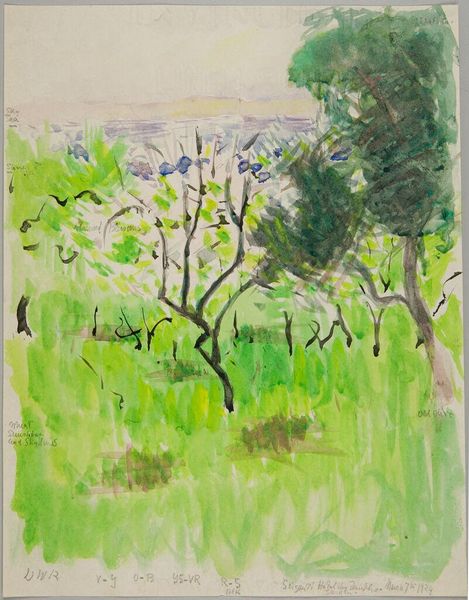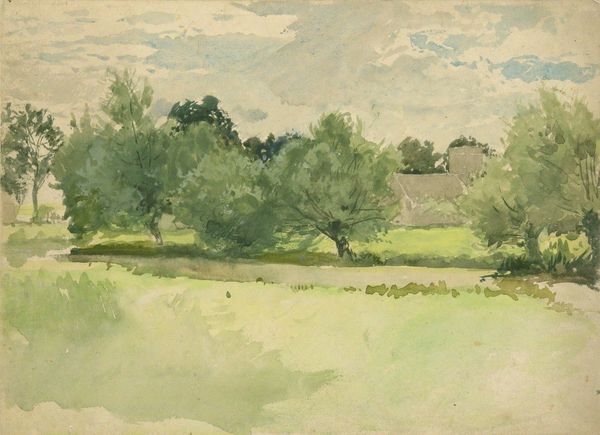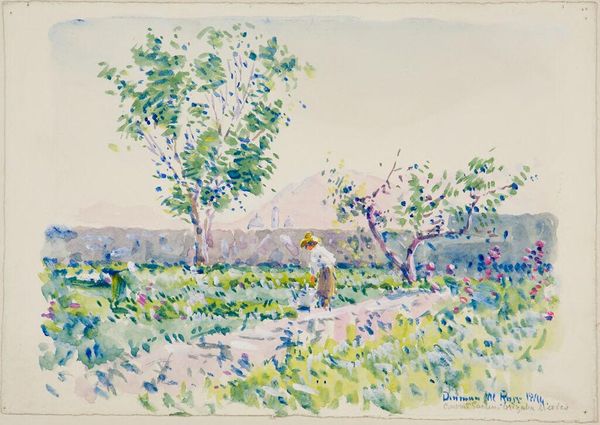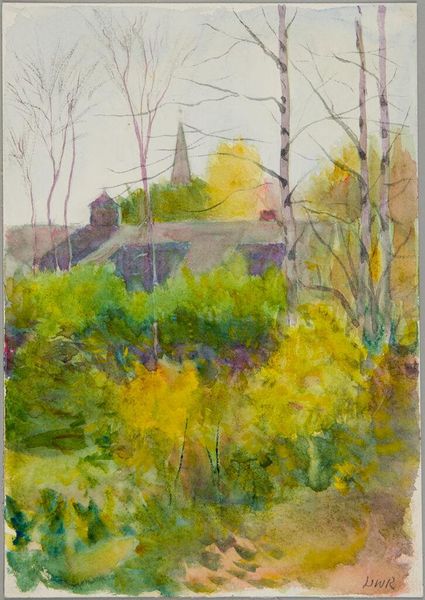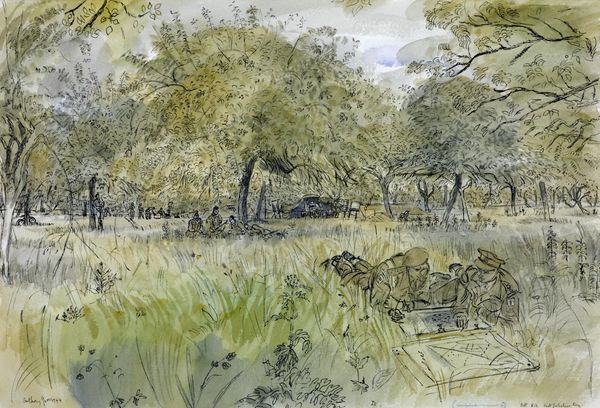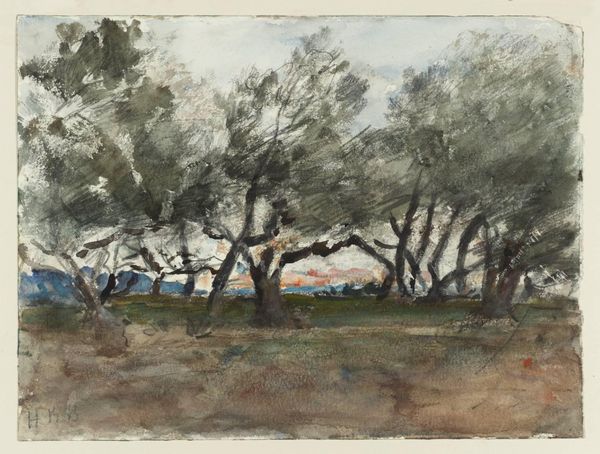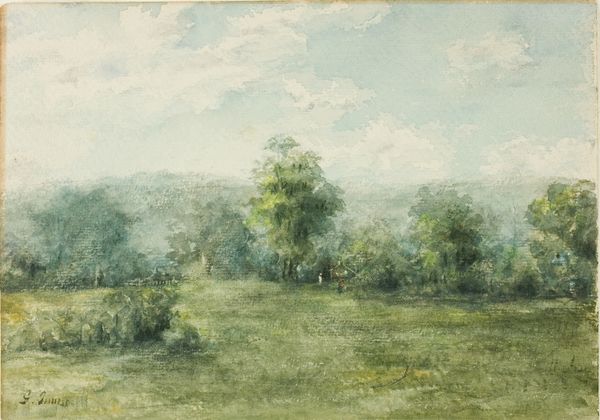
Copyright: Public Domain: Artvee
Editor: This watercolor painting, titled "Blooming Tree," was created by Ladislav Mednyánszky sometime in the early 1900s. It feels almost like a sketch, very immediate, with soft washes of color defining the trees and landscape. What do you make of the artist's technique here? Curator: Well, looking at the watercolor and its impressionistic style, I'm drawn to how Mednyánszky engaged with the materiality of the medium itself. Watercolor allowed for quick, plein-air studies, linking artistic production directly to observation and immediate environmental conditions. Consider the socioeconomic implications: who had access to materials like watercolor paints and paper at the turn of the century, and how does that affect our understanding of the subject matter? Editor: That's interesting, I hadn’t thought of it that way. It seems so effortless, but I suppose access to materials wasn't a given. Does the location matter, in terms of what materials were available? Curator: Absolutely. Mednyánszky was a Hungarian artist often working outside of established urban centers, so his artistic choices were shaped by both his geographic location and the limitations that came with that. Furthermore, plein-air painting democratized art production; it wasn't reliant on studio space or patronage. It’s more about his engagement with the physical landscape, less the story it tells than the material reality of its making. How do you perceive the landscape, considering his possible limited means? Editor: So, rather than reading this simply as a pretty scene, we should also think about how the materials and the process itself become part of the painting's meaning, given his place within the art world, both practically and socially. I'll definitely be thinking about that in relation to other artworks too! Curator: Exactly. We are looking at how artistic practices reflected and responded to the material conditions of their production. It gives another depth of meaning to what may seem like a standard Impressionist scene.
Comments
No comments
Be the first to comment and join the conversation on the ultimate creative platform.
